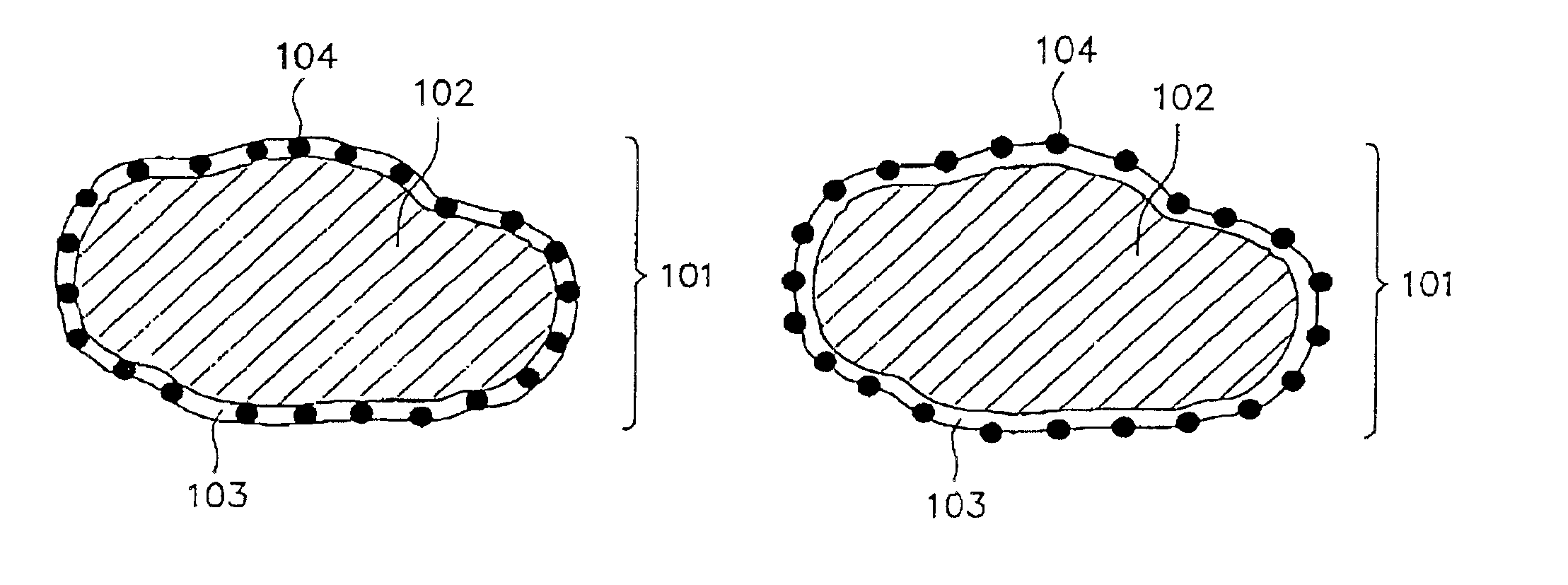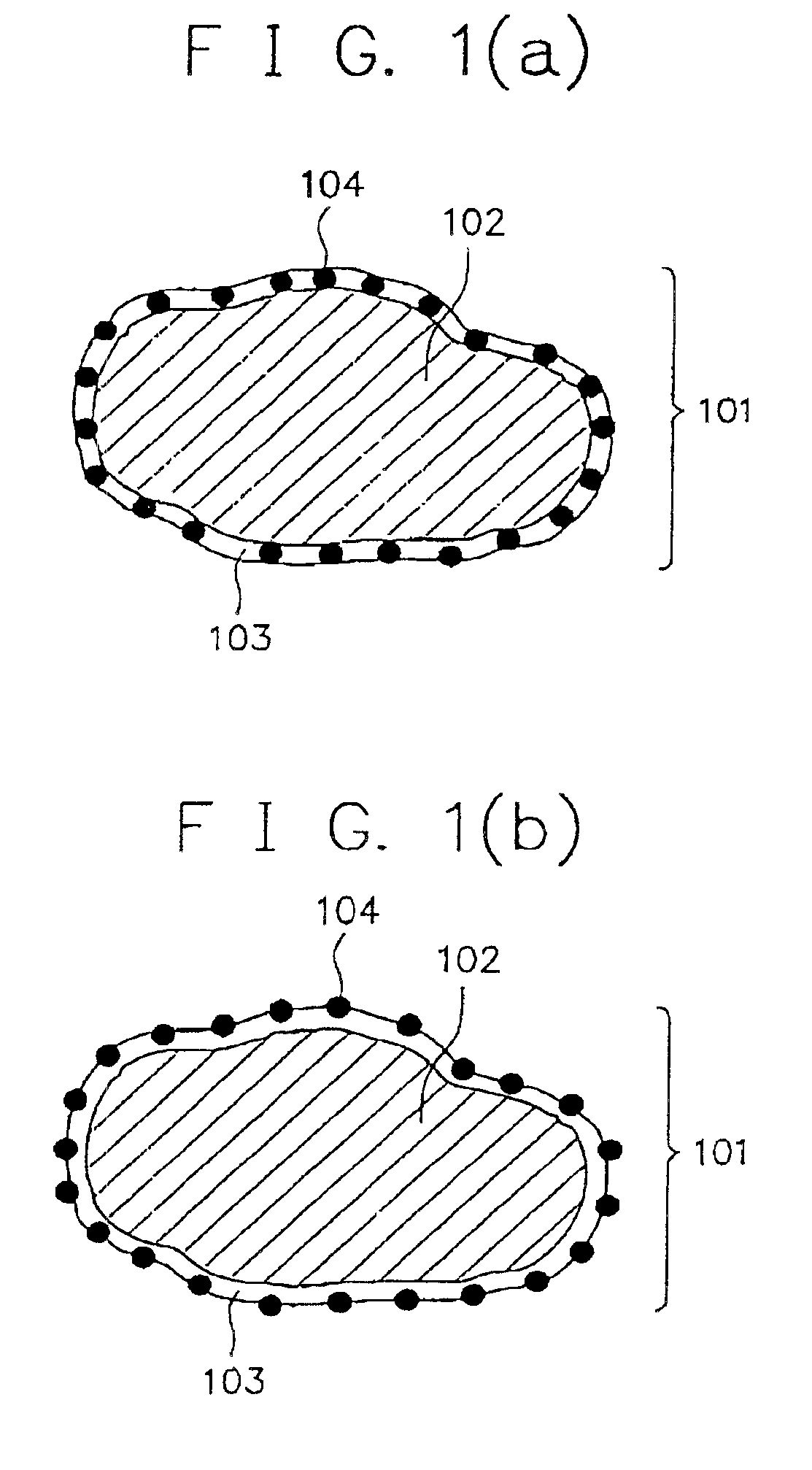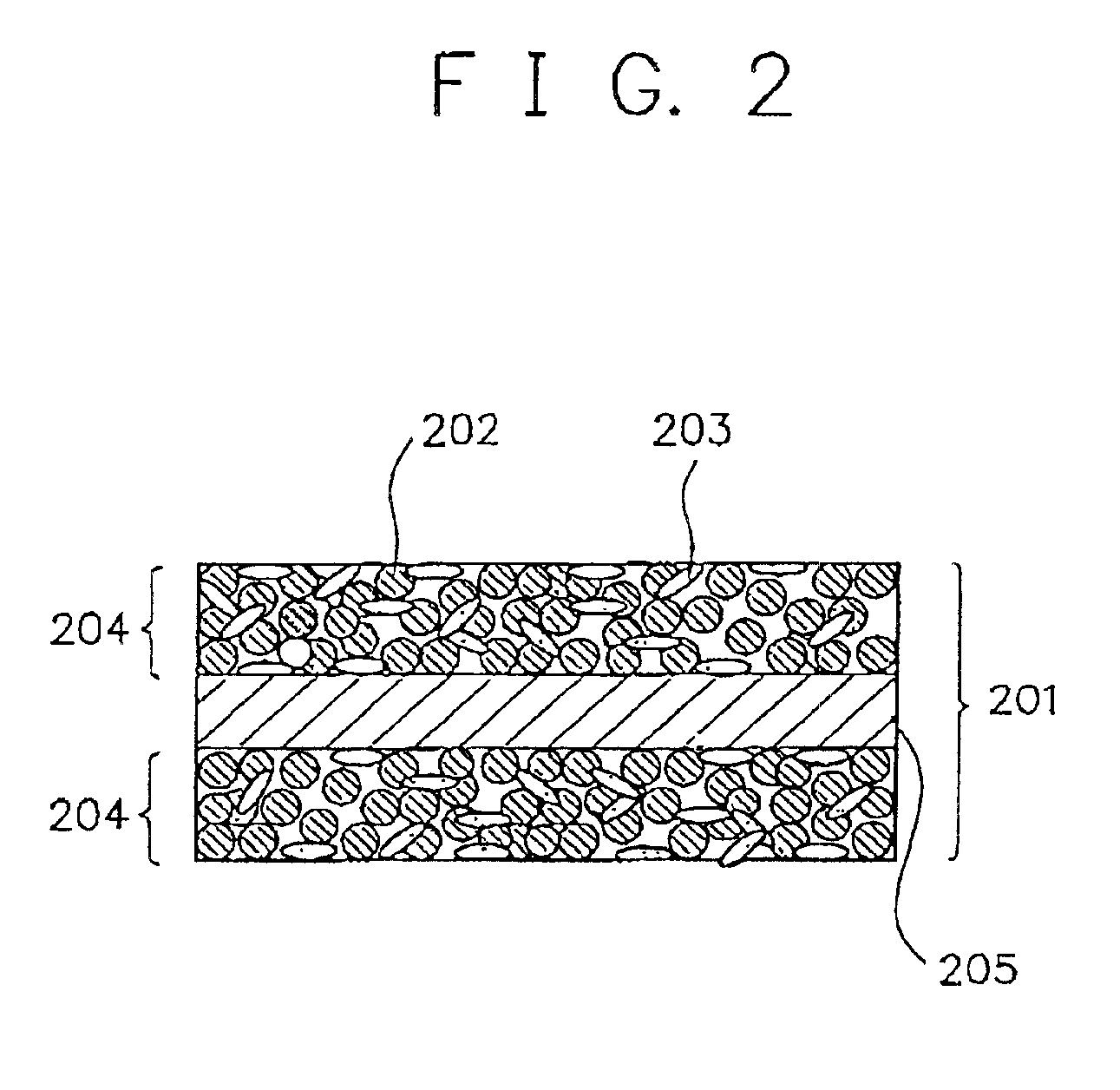Alkaline rechargeable battery and process for the production thereof
a rechargeable battery, alkaline technology, applied in the direction of nickel accumulators, sustainable manufacturing/processing, cell components, etc., can solve the problems of inability to establish new thermal electric power plants, inability to meet the requirements of new electric power plants, etc., to achieve excellent electrode activity, prolong life time, and high active-material utilization efficiency
- Summary
- Abstract
- Description
- Claims
- Application Information
AI Technical Summary
Benefits of technology
Problems solved by technology
Method used
Image
Examples
example 1
[0183]In this example, a spiral-wound cylindrical type rechargeable battery having such configuration as shown in FIG. 5 was prepared as will be described below.
1. Formation of Anode 502:
(1) Preparation of Hydrogen Storage Alloy Powder:
[0184]A hydrogen storage alloy powder was prepared by a casting process using an arc melting furnace. That is, a powdery zirconium (Zr), a powdery titanium (Ti), a powdery nickel (Ni), a powdery manganese (Mn), a powdery vanadium (V), and a powdery cobalt (Co) respectively in a prescribed amount were mixed to obtain a mixture. The mixture was introduced into the arc melting furnace, where the mixture was heat-fused in an argon atmosphere. The fused material was cooled and subjected to a heat treatment at 1100° C. for 10 hours to obtain an alloy lump. The alloy lump was pulverized by means of hydro-pulverization, followed by subjecting to mechanical pulverization, and sifted an alloy powder with a particle size of less than 200 mesh.
[0185]Thus, there w...
example 2
[0203]The procedures of Example 1 were repeated, except that the step 1-(2) [preparation of powdery composite material] in the step 1 (formation of anode 502) of Example 1 was conducted as will be described below, to obtain a spiral-wound cylindrical type rechargeable battery.
Preparation of Powdery Composite Material:
[0204]97 wt. % of the hydrogen storage alloy powder obtained in the step 1-(1) of Example 1, 1 wt. % of an aluminum powder having an average particle size of less than 20 μm, and 2 wt. % of a carbonyl nickel having an average particle size of less than 1 μm were mixed to obtain a mixture.
[0205]The mixture was introduced together with grinding balls made of alumina into a grinding vessel made of alumina of a tumbling ball mill, where the inside atmosphere of the grinding vessel was replaced by an argon gas atmosphere and the mixture was subjected to a grinding treatment in the argon gas atmosphere at a revolution speed of 120 rpm for 5 hours to obtain a powdery composite...
example 3
[0207]The procedures of Example 1 were repeated, except that the step 1-(2) [preparation of powdery composite material] in the step 1 (formation of anode 502) of Example 1 was conducted as will be described below, to obtain a spiral-wound cylindrical type rechargeable battery.
Preparation of Powdery Composite Material:
[0208]97 wt. % of the hydrogen storage alloy powder obtained in the step 1-(1) of Example 1, 1 wt. % of a magnesium powder whose maximum particle size is less than 80 mesh, and 2 wt. % of a copper powder having an average particle size of less than 1 μm were mixed to obtain a mixture. The mixture was introduced together with grinding balls made of alumina into a grinding vessel made of alumina of a tumbling ball mill, where the inside atmosphere of the grinding vessel was replaced by an argon gas atmosphere and the mixture was subjected to a grinding treatment in the argon gas atmosphere at a revolution speed of 120 rpm for 5 hours to obtain a powdery composite material...
PUM
| Property | Measurement | Unit |
|---|---|---|
| thickness | aaaaa | aaaaa |
| thickness | aaaaa | aaaaa |
| particle size | aaaaa | aaaaa |
Abstract
Description
Claims
Application Information
 Login to View More
Login to View More - R&D
- Intellectual Property
- Life Sciences
- Materials
- Tech Scout
- Unparalleled Data Quality
- Higher Quality Content
- 60% Fewer Hallucinations
Browse by: Latest US Patents, China's latest patents, Technical Efficacy Thesaurus, Application Domain, Technology Topic, Popular Technical Reports.
© 2025 PatSnap. All rights reserved.Legal|Privacy policy|Modern Slavery Act Transparency Statement|Sitemap|About US| Contact US: help@patsnap.com



